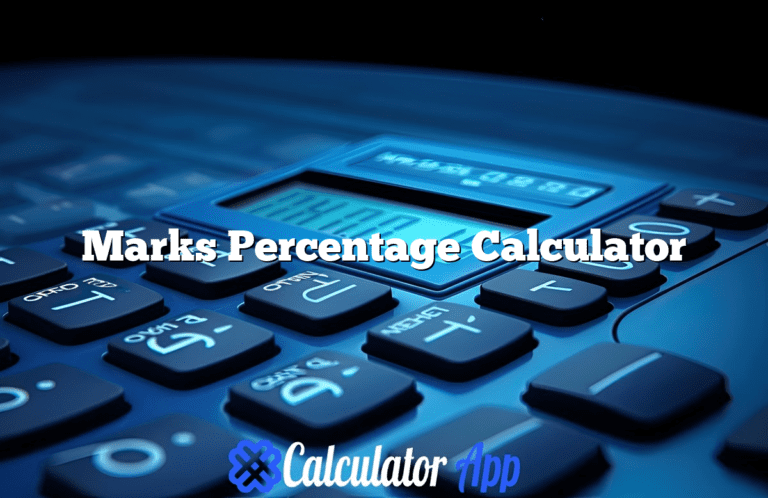Advance All in One Percentage Calculator
Percentage of a Number
What is % of ?
Percentage Increase/Decrease
What is the percentage increase/decrease from to ?
What Percentage is One Number of Another
is what percent of ?
Percentage Difference Between Two Numbers
What is the percentage difference between and ?
Comprehensive Guide to Percentage Calculations: How to Master Every Type of Percentage Calculation
Introduction
Percentage calculations are an essential aspect of modern life. Whether you’re working out discounts during shopping, tracking the performance of your investments, or analyzing data in professional or academic settings, percentages help simplify complex data into understandable and relatable figures.
Understanding how to perform various percentage calculations can offer you a significant advantage in financial management, budgeting, and even everyday decisions like health tracking and time management. In this comprehensive guide, we will explore the different types of percentage calculations, explain their formulas, and offer practical real-world examples to help you grasp the concepts. By the end of this article, you will feel confident in tackling any percentage-related problem with ease and accuracy.
1. What Are Percentages and Why Do They Matter?
A percentage is a mathematical concept that represents a number as a fraction of 100. It is denoted by the symbol “%” and is widely used to compare values, determine proportions, and simplify ratios. The term itself is derived from the Latin phrase “per centum,” meaning “by the hundred.” For example, when you say “50%,” it means 50 out of 100, or half of something.
Percentages allow us to easily compare numbers of different scales by converting them to the same base, making them incredibly useful in everyday calculations.
Here’s why percentages matter:
- Universal Application: Percentages are widely applicable across various fields, such as finance, health, business, and academics.
- Simplified Representation: Instead of dealing with large numbers, percentages help break down values into more manageable and understandable figures.
- Data Comparison: Percentages make it easy to compare two or more values, even if they are on different scales, by converting them into a uniform standard.
Understanding percentages opens the door to better decision-making and smarter financial planning. Let’s explore the various ways you can calculate percentages in different situations.
2. Different Types of Percentage Calculations
Now that we’ve established what percentages are, let’s dive into the different types of percentage calculations and how you can use them. Each type of calculation has a specific use case and formula, which we’ll explain in detail.
a. Calculating the Percentage of a Number
This is the most basic type of percentage calculation, where you calculate what a given percentage of a number is. For instance, you might want to calculate how much 20% of a $200 bill is.
Formula:
Example:
What is 15% of 80?
In this case, 12 is 15% of 80. This type of calculation is often used in situations like calculating tax, interest, or tips.
b. Finding What Percentage One Number Is of Another
This calculation is used to determine what percentage one number represents of another number. It’s particularly useful when comparing parts to a whole.
Formula: (See Also: Tip Calculator)
Example:
What percentage of 200 is 50?
In this example, 50 is 25% of 200. This type of calculation is useful in determining grades, productivity percentages, or any scenario where you’re comparing parts to the whole.
c. Percentage Increase and Decrease
Percentage increase and decrease calculations are vital in fields like business, finance, and economics, where you need to track growth or decline between two values over time. This type of calculation helps determine how much a value has grown or shrunk as a percentage.
Formula for Percentage Increase:
Formula for Percentage Decrease:
Example (Increase):
Suppose your monthly rent increases from $1,000 to $1,200. To calculate the percentage increase:
So, your rent increased by 20%.
Example (Decrease):
If your monthly electricity bill decreases from $150 to $120, the percentage decrease is:
Thus, your electricity bill has decreased by 20%.
d. Percentage Difference Between Two Numbers
This calculation helps determine how two numbers differ in terms of percentage. It’s commonly used in fields like statistics and finance to compare different values.
Formula:
Example:
To find the percentage difference between 200 and 250:
This tells you that the percentage difference between 200 and 250 is roughly 22.22%. (See Also: Odds Calculator)
3. Real-World Applications of Percentage Calculations
Percentages are not just confined to textbooks; they are widely used in real life. From managing your personal finances to analyzing data in your job, percentages play a critical role in many decisions. Here are a few common scenarios where percentage calculations are especially helpful.
a. Shopping Discounts and Sales
Sales and discounts often appear as percentages, and knowing how to calculate the exact amount you save can help you make smarter shopping decisions.
Example:
A $500 TV is on sale for 30% off. How much do you save, and what is the final price?
The final price after discount is $500 – $150 = $350.
b. Personal Finance and Loan Interest Rates
Understanding percentages is essential when calculating loan interest, investment returns, or credit card rates.
Example:
You have a savings account with $1,000 at a 5% annual interest rate. After one year, how much interest will you earn?
So, you will earn $50 in interest, making your total savings $1,050 after one year.
c. Health and Fitness
Tracking progress in fitness often involves percentages. Whether you are monitoring body fat percentage or trying to figure out how much weight you need to lose, percentages make the math easier.
Example:
You currently weigh 180 pounds, and your goal is to lose 10% of your body weight. How much weight do you need to lose?
So, to reach your goal, you need to lose 18 pounds.
d. Grade and Exam Calculations
In academics, percentages are the most common way to calculate exam scores, grade averages, and overall performance.
Example:
If you scored 85 out of 100 on a test, what is your percentage score?
This means you scored 85%, which might correspond to an “A” depending on your grading scale.
4. Avoiding Common Mistakes in Percentage Calculations
Despite the simplicity of percentages, certain errors frequently occur when performing percentage calculations. Let’s go over some common mistakes and how you can avoid them.
Misunderstanding Percentage Points vs. Percentages
Many people confuse percentage points with percentages, especially in financial contexts. For example, if interest rates increase from 5% to 7%, the increase is 2 percentage points, but it is a 40% increase.Forgetting to Multiply by 100
One of the most common mistakes is forgetting to multiply by 100 when converting a fraction to a percentage. For example, 0.25 is 25%, not 0.25%. Always remember to perform the final multiplication step.Using the Wrong Base Value
When calculating percentage increases or decreases, it’s essential to use the correct base value. If you mix up the original value and the new value, you will get inaccurate results.Not Converting Decimals to Percentages
Remember that percentages are fractions of 100. If you end up with a result like 0.25, it means 25%, not 0.25%. Always convert decimal results into percentages by multiplying by 100.
5. Conclusion
Mastering percentage calculations is a vital skill that will serve you in various aspects of your life. Whether you are calculating discounts, analyzing financial statements, or simply managing your household budget, understanding percentages can lead to more informed decisions and a better grasp of numerical data.
By using the formulas and examples provided in this guide, you will be equipped to handle all types of percentage-related calculations with confidence. From basic percentage determination to more complex applications like percentage increase, decrease, and differences, this comprehensive guide provides you with all the tools you need to become proficient in working with percentages.
So the next time you encounter a percentage-based problem, you’ll know exactly what to do—and how to do it efficiently.





